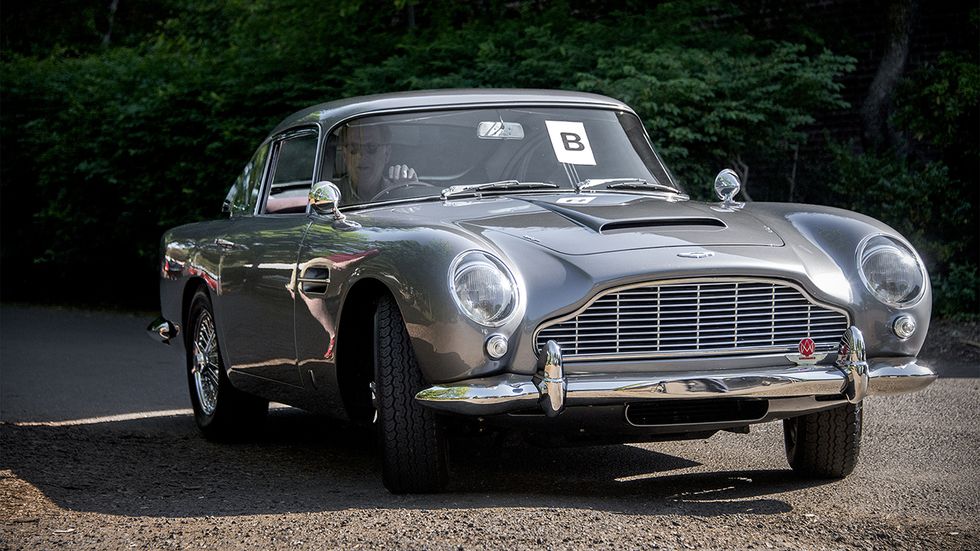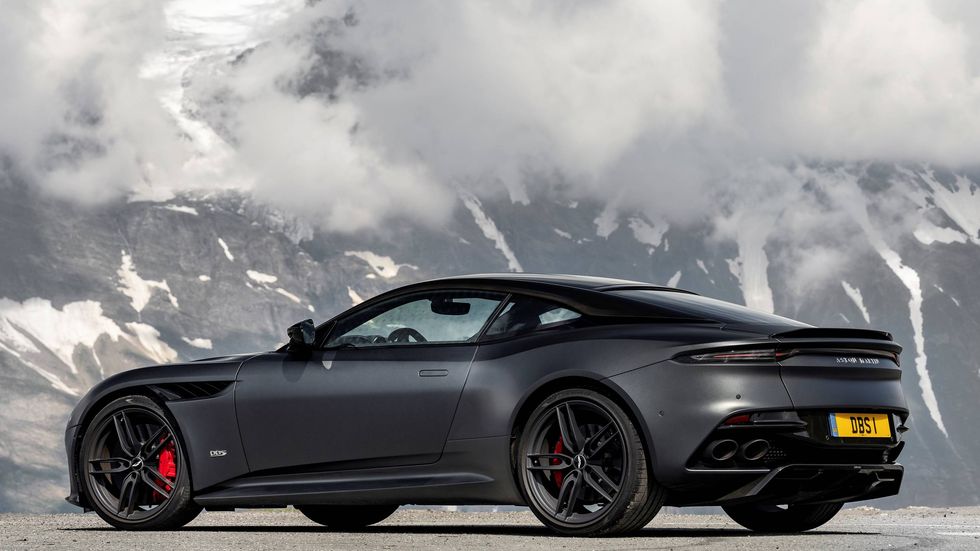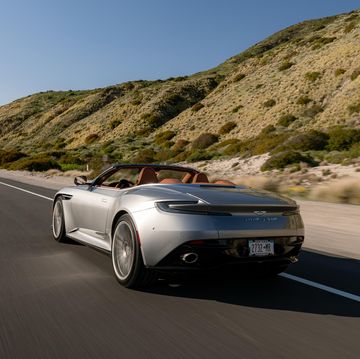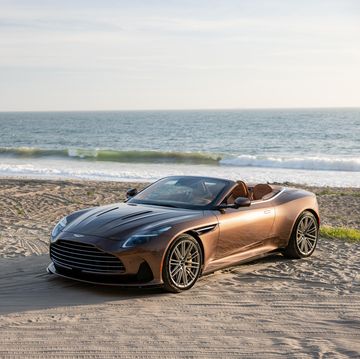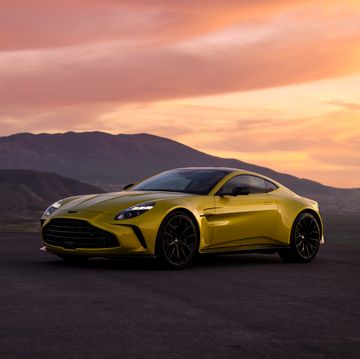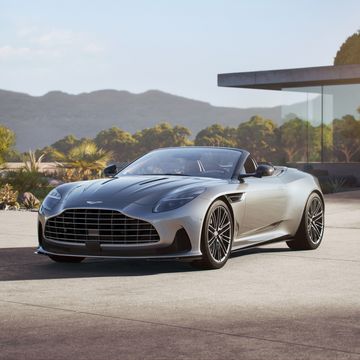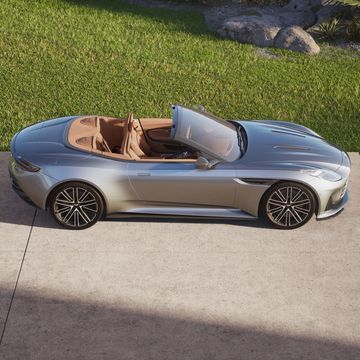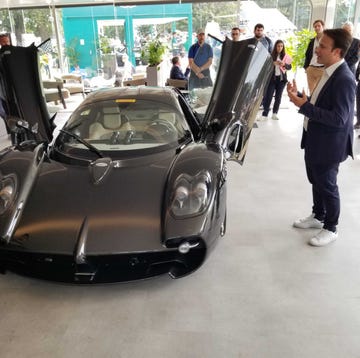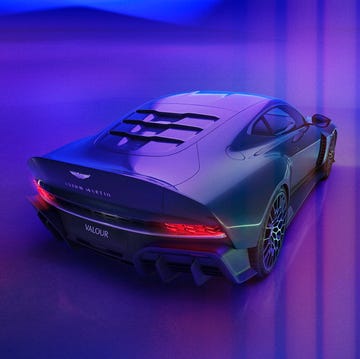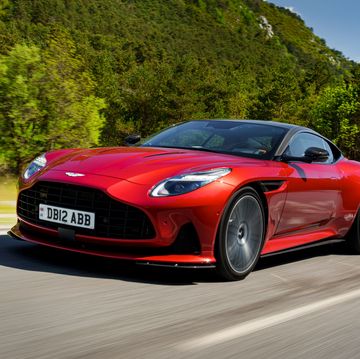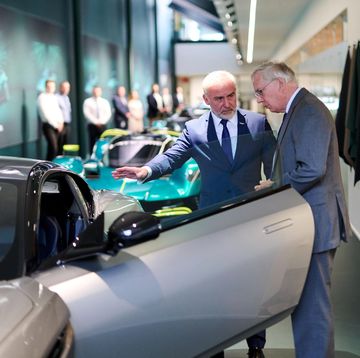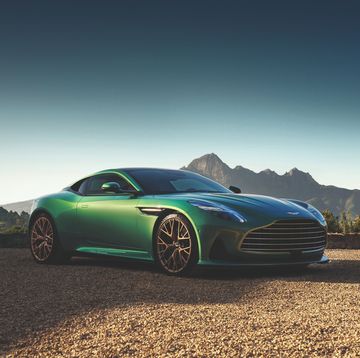Paul Barritt spent three years at the Rover Group after he earned his engineering degree from the University of Coventry in England. Then he decided to join Aston Martin, which at the time had an engineering staff of roughly 25. His friends told him he was crazy.
Twenty-one years later, Barritt doesn’t regret it for a second. Rover Group is no more, and Aston Martin’s financial star has generally risen. Barritt has helped build a range of memorable if not always successful automobiles. He started on the DB7, worked on Aston’s stillborn midengine project, then helped create the company’s long-running aluminum VH build architecture. He was vehicle engineering manager for the two-seat Vantage (2006), chief engineer for the Vantage line and program manager for the Rapide S and the short-lived Cygnet mini car. He’s currently vehicle line director for Aston’s DBs.
Vehicle line director? We asked, of course, and pried out what we could about how a 105-year-old company that has averaged 900 cars a year is going forward.
Autoweek: What exactly does the DB line director do?
Barritt: I started on the DB11 and DBS as chief program engineer, then moved into this role. The vehicle line director was something (CEO) Andy (Palmer) created almost as soon as he came into the company. It’s essentially about delivering the profitability targets for the car line. I'm basically the ultimate arbitrator and decision-maker on all things to do with either DB11 or DBS. It's kind of my job really to balance up the cost of delivering the car, the material cost in the car and the content that goes into the car with what the market wants and expects. I work with the planning team and the regions, looking at what sort of volume we think we can take. You’re balancing across a triangle. We talk about a triangle of tension that's cost, market requirement and volume to get to that profit target. That's what I do.
It's definitely not an engineering job, but because I've done engineering pretty much all my career, I do gravitate back toward the engineering. I really have to make myself focus on the business role as opposed to the engineering role because it's what I really should be doing. When you've been at the heart of vehicle development and creation, it's really hard to step away.
That said, the engineering background is quite valuable. When someone says “we can save X percent from this,” you have to ask “what's the cost of that in terms of what an Aston Martin is supposed to be?" Is it going to be a negative impact to the customer and to the brand? It does allow me to challenge, particularly the engineering side. But the other great thing about the vehicle line director role is that it touches just about everything. I've had to understand in great detail how do we take a car to market, to evaluate what we can really sell in certain regions. I've learned a load of new stuff doing it.
Autoweek: Speaking of triangles, there’s a stereotype of the car business where you have your engineers, your bean counters and the people who do the selling, and often those three are adversarial or at least not entirely respectful of the other. Is that an accurate picture?
Barritt: Yes and no. The thing I’ve learned is that you're never going to keep everybody happy because, ultimately, what you're trying to do is get to a compromise. Don't believe anybody who says they can do a car without compromise because you're always trading one thing for another. It's what you have to do.
But yeah, you have to have quite an empathetic view, and not lose track of your job, which is building the best Aston Martin that can be built. So you have to try to understand where everybody is coming from. You're balancing up everybody's views, but ultimately somebody has to make the decision. I'm held accountable for that decision, but I'm quite comfortable in that, provided I feel I've got the right information coming in. Where I get uncomfortable is where somebody is not telling me everything. Because if you make a decision on incomplete information or incomplete data, you may make a wrong decision. It's really important that when we're having these discussions and we're going through these challenges that everybody just lies it out on the table as it is. If everybody understands everybody else's position, we can talk it through, make a decision.
And generally we are all very cooperative at Aston Martin, The sharing here is real. We’re such a small team still compared to the likes of Jaguar Land Rover and so on. It’s harder to keep secrets, and we pride ourselves on being nimble because we're small. Generally, I know all of my peers. I can easily go and have a conversation and regularly do. "What do you think? What do you need? What's stopping you from doing your job?" And we are still sort of the underdog, so that motivates. It's a healthy culture.
Autoweek: In 21 years at AM, you’ve seen some pretty significant swings up and down. In that context, has the cooperative agreement with Mercedes Benz (for electrical systems and V8s) helped keep the curve pointed upward?
Barritt: Oh God, yeah, yeah. No doubt, because the cost of developing electrical architecture is enormous. It's probably the most challenging aspect of a vehicle development because it's so complex now, and it's getting more complex as you start to consider autonomy, hybridization and, ultimately, full electric. So why wouldn't you go to one of the leading manufacturers in the world and take an electrical architecture that they would have spent billions of Euros developing? Frankly, it's a godsend to be able to pick up that system and put it into our car knowing that it's reliable, knowing that it's fully developed. It’s mostly transparent to the owner, and there’s a sameness to it across the industry, so why wouldn’t we take that and focus our own resources on what makes a DB a DB?
I’ve had one or two people here say, "Well, I recognize that that part is from a Mercedes.” OK, yeah, it is. But look at the benefit that comes with it. We used to get criticized for having some Ford switchgear in the car. But what's wrong with Mercedes? Nothing.
Autoweek: In Andy Palmer’s “seven years, seven cars” plan, we’re moving toward the Aston Martin SUV. It might even be next. Given that and the state of the market, can the DB and its variants remain the core of Aston Martin, or does that have to change going forward?
Barritt: I guess it depends on how you define core. Because if you look at Porsche, you'd argue the 911 is still the core -- still embodies the spirit of Porsche. But it's not the majority seller. In China, I think Porsche is known as an SUV and limousine company.
I think the DB line is our 911. It's our iconic nameplate. It will continue to embody the spirit of Aston Martin and remain at the core of the brand. I expect it to always be there. But it will have to evolve because the world is evolving. We know what we're doing with this cycle, but it's fair to say we haven't decided where it will go in the next cycle of cars. We're in the discussion, data-collection phase of what it should be. Not that I would tell you, but I really can’t because I haven't gathered everything in yet. The things you think about are future legislation. What are all the countries going to do in terms of emissions performance? There's also looking at what are cities looking to do? You've got Paris looking at potentially banning internal combustion engine cars. Oxford in the U.K. is also talking about that. It's inevitable that other cities will start going in the same direction. We don't know yet, but you've got to think about that.
There's autonomy and where is that market moving and how are suppliers and what are other manufacturers doing? Does it suit our customers? Will it be legislated in or out? Then you've got general market conditions and how much longer will the world tolerate internal combustion engines. It is a time of uncertainty because we're very much in that transitional phase.
Autoweek: Can you see a DB12 or a DB14 that’s on one hand largely autonomous and on the other as pleasant, as enjoyable, as fast to drive as the DB11, should I choose to make it that way?
Barritt: That's a good question, isn't it? And it's one that we’re wrestling with because personally I struggle to see how you can get the visceral experience that comes from a powerful internal combustion engine and all the noise that goes with it, the characteristic that goes with it, with autonomy where you're not driving. You are just traveling in a car if you're in a full autonomous car. The two have got to come together, and I don't think we've worked out yet exactly how they will come together. But it’s something we're going to have to tackle because it's clearly coming at us. Watch this space. These are the things that we're wrestling with internally.
